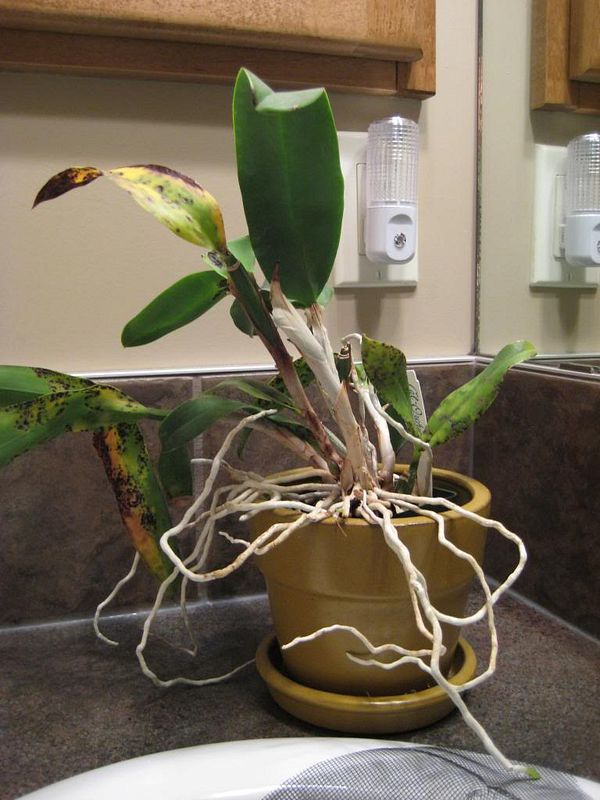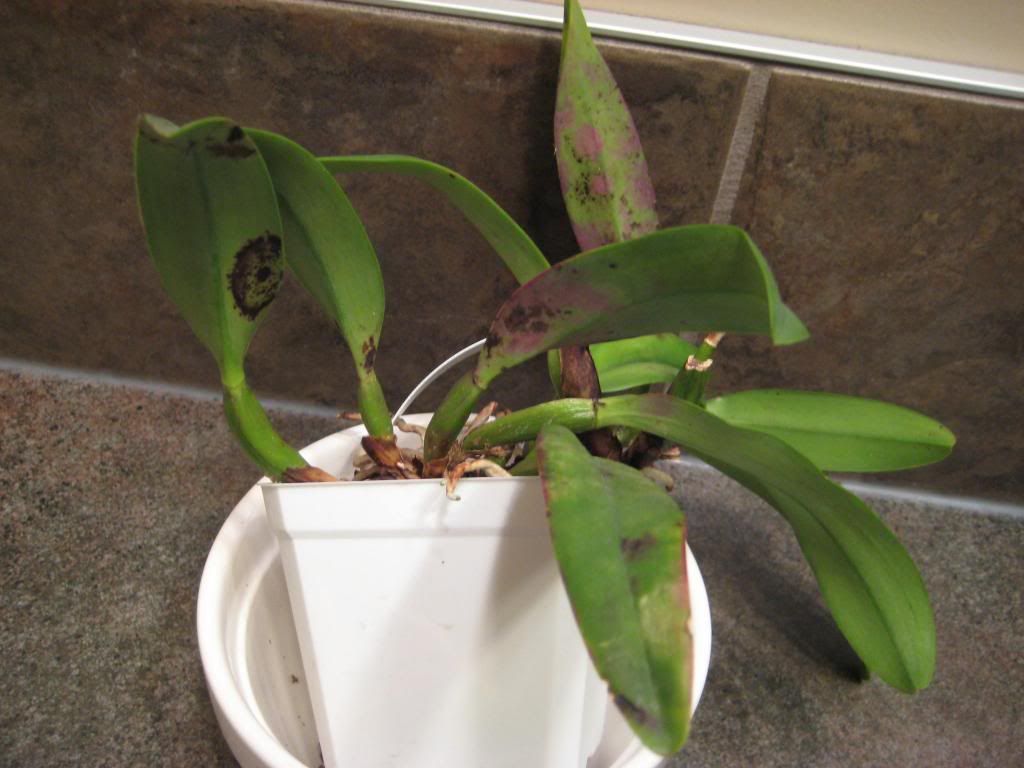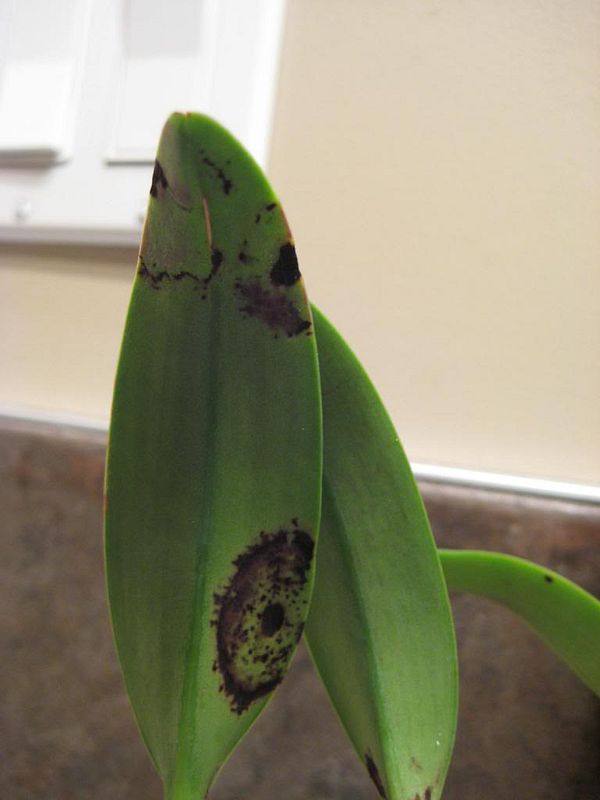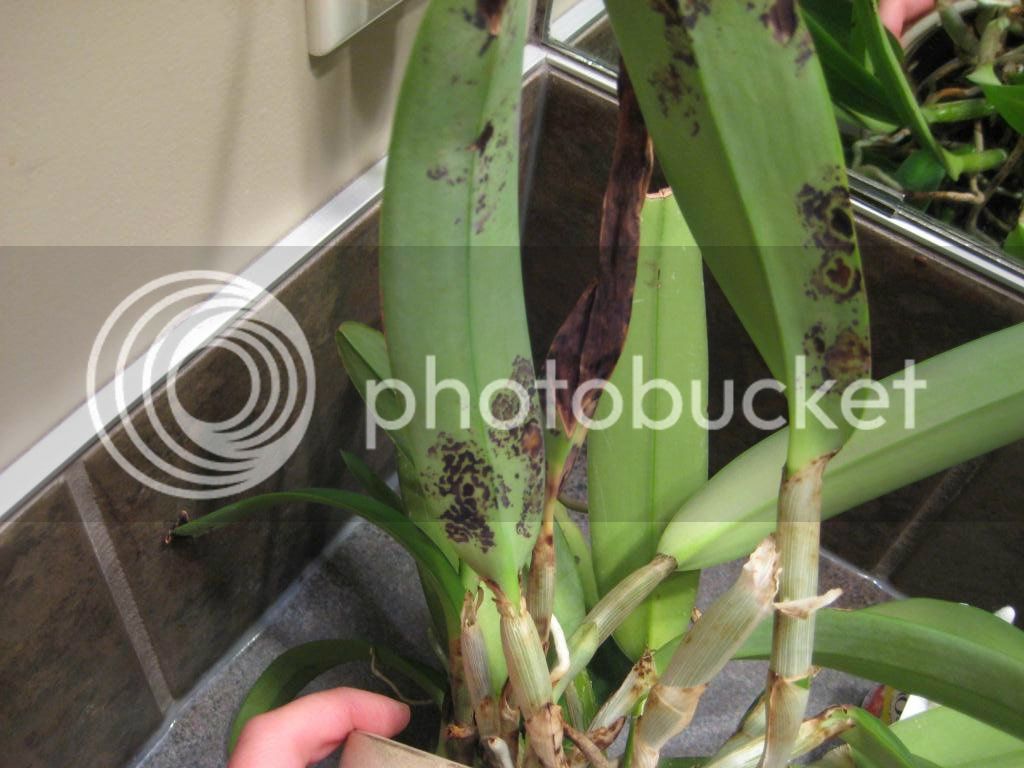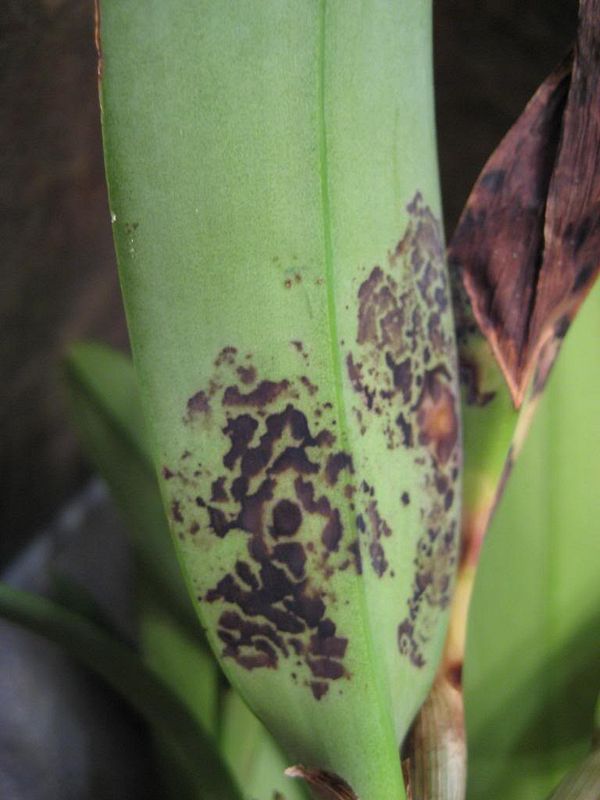For Joanne plants, she needs to get a systemic fungicide, or eventually use something like captan or mancozeb sprays for some months to avoid new contamination, and destroy any infected plants... Those leaf spot fungus are really contagious indeed. Though the systemic fungicide would solve the problem within days.
In Japan there are all sorts of virus problems. In Calanthe collections in particular, virus is the big fear. Before micropropagation of these (starting 3 decades ago), plants were collected from the wild directly. Many had virus and over time this spread from collection to collection such that by the mid to late 70's it seemed the entire hobby of growing them was going to disappear as whole collections became infested.
Today Calanthe are produced in the thousands yearly, so there is always new blood. Still, growers have to be ever vigilant for virus signs - any questions about a plant means its immediate destruction - a pretty common thing in a large collection.
The problem is very different in fact... The Japanese put high prize on many plants, then they divide them to sell divisions at very high price, like the cymbidium, neofinetia before, calanthe. They use the 'all traditional' crap ******** way, with the scissors made of a 'traditional metal' specifically for the bonsai, and they believed ( still do...) in magic, the metal of the scissors will avoid any diseases, etc... so they never disinfect those scissors ( that are made in metals that cannot be heated without tampering it)...
They contaminated heaps of plants that way, and indeed when testing some cymbidium goeringii, we find viruses. By making propagation and new generations, they avoid seeing the symptoms for a while, until they use their magic scissors..., or for tissue culture until the viral load is high enough (about the time the seedlings are mature). Same in Korea so far.
Calanthe and lycaste are infamous too for catching a wide range of viruses that do not damage our tropical orchids, these are real virus magnets. They can catch even common garden viruses. The Japanese got a lot of problems too with ORSV and calanthe, mostly because two large nurseries who made the first calanthe hybrids ( like Kozu, etc...) used to grow odontoglossum for cut flower... and calanthe is very sensitive to ORSV.
What most Japanese believe too to be a virus in the 60's in calanthe, and wiped out most of their plants was not a virus but a mycoplasm.
As a basis, the wild calanthe nearly never have any virus, but they became all contaminated because of poor culture practice, and poor insect control...























